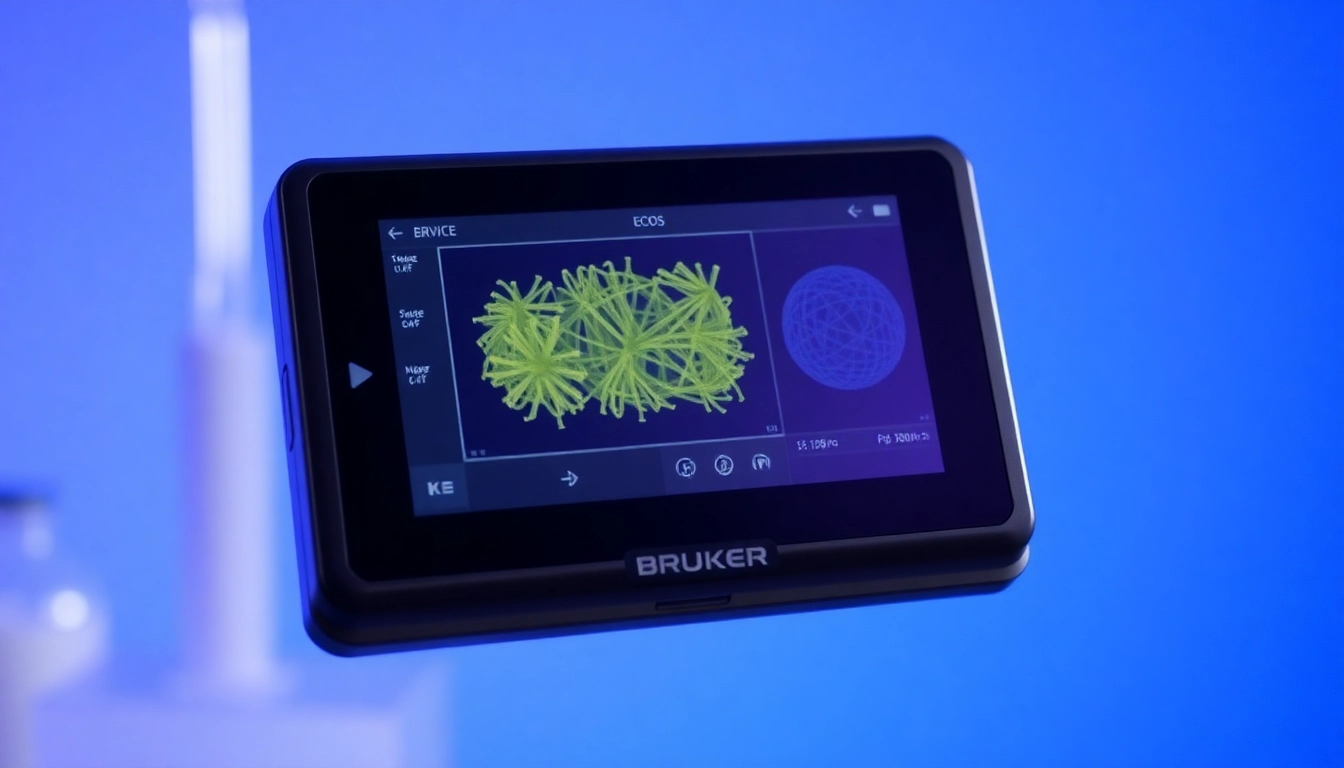1. Introduction to the Bruker EOS 500 Handheld LIBS Analyzer
The landscape of analytical instrumentation has evolved significantly in recent years, particularly with advancements in portable technologies. Among these innovations, the Bruker EOS 500 Handheld LIBS Analyzer has emerged as a leading solution for real-time material analysis. This device harnesses the power of Laser-Induced Breakdown Spectroscopy (LIBS) to deliver precise analytical results in a user-friendly format, making it valuable in various sectors, including metallurgy, environmental monitoring, and quality control.
1.1 Overview of LIBS Technology
LIBS is a powerful spectroscopic technique that uses a highly focused laser to create a plasma on the surface of a material. This plasma, which can reach extremely high temperatures, causes the material to emit light. The emitted light is then analyzed, allowing for the determination of elemental compositions. The rapidity of LIBS—typically yielding results in seconds—coupled with its ability to analyze solid, liquid, and gaseous samples makes it a versatile tool in scientific analysis.
1.2 Key Features of the Bruker EOS 500
The Bruker EOS 500 stands out with several key features that enhance its usability and accuracy. These include:
- Portability: Its compact design allows users to carry it easily, accommodating fieldwork and on-site analysis.
- Rapid Analysis: The device delivers results in real-time, making it ideal for environments where timely decisions are crucial.
- User-Friendly Interface: An intuitive touchscreen interface simplifies operation, reducing the learning curve for new users.
- Robust Construction: Designed for durability, this analyzer withstands harsh conditions often found in field applications.
- Comprehensive Elemental Coverage: The EOS 500 can detect nearly all elements from lithium to uranium, catering to a wide range of applications.
1.3 Typical Applications in Various Industries
The versatility of the Bruker EOS 500 enables its application across multiple industries:
- Mining and Metals: Used for analyzing ore and metal compositions to optimize extraction processes.
- Environmental Monitoring: Assists in detecting contaminants in soil or water, thus vital for environmental health assessments.
- Industrial Manufacturing: Ensures quality control by analyzing raw materials and finished products for compliance with specifications.
- Forensics: Aids in crime scene investigations by determining the elemental composition of substances, including gunshot residues.
2. Advantages of Using the Bruker EOS 500 Handheld LIBS Analyzer
2.1 Portability and Ease of Use
The Bruker EOS 500 is designed with portability in mind. Weighing only a few kilograms, it can be easily transported to remote sites where analysis is required. The straightforward operation is facilitated by a touchscreen interface that requires minimal training. Users can quickly switch between different analysis modes to suit their specific needs, making the device accessible to both seasoned professionals and newcomers alike.
2.2 Real-Time Analysis Capabilities
One of the standout features of the Bruker EOS 500 is its capacity for real-time analysis. By providing immediate feedback on material composition, it enables quick decision-making in critical applications, such as process adjustments in manufacturing or environmental monitoring responses. Furthermore, the ability to visualize data instantly allows for immediate adjustments and optimizations, a significant advantage over traditional sampling methods that require lengthy laboratory processing times.
2.3 Durability and Reliability for Fieldwork
The rugged construction of the EOS 500 makes it ideal for fieldwork across diverse conditions. Whether in extreme cold, heat, or even dusty environments, this device is built to perform consistently. This reliability is crucial for professionals who require uninterrupted service in challenging settings, such as remote mining operations or outdoor environmental assessments.
3. Best Practices for Effective Use of the Bruker Analyzer
3.1 Preparing Samples for Analysis
To achieve optimal results with the Bruker EOS 500, proper sample preparation is vital. Samples should be cleaned of contaminants and debris, ensuring that the laser targets the intended material. For solid samples, a clean, flat surface helps improve the focus of the beam, facilitating more accurate readings. When working with liquid samples, appropriate containers should be used to prevent spillage and contamination.
3.2 Calibrating the Device for Accurate Results
Calibration is critical for any analytical instrument. Regularly calibrating the EOS 500 against known standards ensures that it produces accurate and reliable results. Users should follow established protocols for calibration, which may involve running standard reference materials and making necessary adjustments based on discrepancies observed during analysis.
3.3 Interpreting Data Outputs
Interpreting the data output from the Bruker EOS 500 requires an understanding of elemental spectrometry. Users should familiarize themselves with the software accompanying the device, which provides detailed analysis reports. Training on reading emission spectra and understanding elemental concentrations can significantly enhance the user’s ability to make informed decisions based on analytical results.
4. Common Challenges and Solutions
4.1 Troubleshooting Device Settings
While the Bruker EOS 500 is designed for ease of use, users may encounter issues related to device settings. Common problems include incorrect calibration, improper settings for the type of sample being analyzed, and low battery issues. When troubleshooting, it is beneficial to refer to the user manual, which provides detailed guidance on settings optimization and error resolution. Additionally, maintaining regular communication with technical support can facilitate swift solutions to any operational challenges.
4.2 Handling Complicated Materials
Some materials may present complexities during analysis, such as layered or heterogeneous compositions. Before analysis, a thorough understanding of the material’s properties can guide users in selecting the appropriate analysis technique or mode. When dealing with such materials, it may be necessary to employ advanced techniques or adjust laser settings to improve interaction with the sample, thereby enhancing detection accuracy.
4.3 Ensuring Consistent Results Across Analyses
Consistency in analytical results can sometimes be a challenge, especially when comparing results from different operators or sessions. Establishing a standard operating procedure (SOP) for the use of the EOS 500 can reduce variability. Regular training of personnel and adherence to calibrated benchmarks ensure that all users are aligned in their methodologies, thus promoting reliable results across analyses.
5. Future Trends in Handheld LIBS Technology
5.1 Emerging Market Needs and Opportunities
The future of handheld LIBS technology like the Bruker EOS 500 is poised for growth as industries increasingly demand portable and efficient tools for material analysis. As concerns regarding sustainability and environmental safety rise, there is a growing need for technologies that can swiftly assess materials for compliance with standards. The EOS 500 addresses this demand, offering real-time infrastructure for monitoring and analysis in ecological applications, which is expected to gain traction in both regulation and industry standards.
5.2 Innovations in Handheld Instrumentation
Ongoing research and development are expected to yield improvements in handheld LIBS setups, such as enhanced sensitivity, lower detection limits, and broader elemental coverage. Innovations may also include integration with artificial intelligence (AI) to improve user experience by providing predictive analytics and automated reporting systems. As LIBS technology evolves, the potential for smaller, lighter instruments without sacrificing performance opens new possibilities for widespread applications in diverse fields.
5.3 The Role of the Bruker EOS 500 in Advancing Industry Standards
The Bruker EOS 500 will likely continue to be at the forefront of establishing industry standards in handheld LIBS technology. As demands for efficiency and reliability in material testing rise, the EOS 500 represents a paradigm shift towards more accessible and real-time analysis methods. By setting benchmarks for performance and user experience, it not only meets current needs but also shapes the future landscape of materials analysis.


